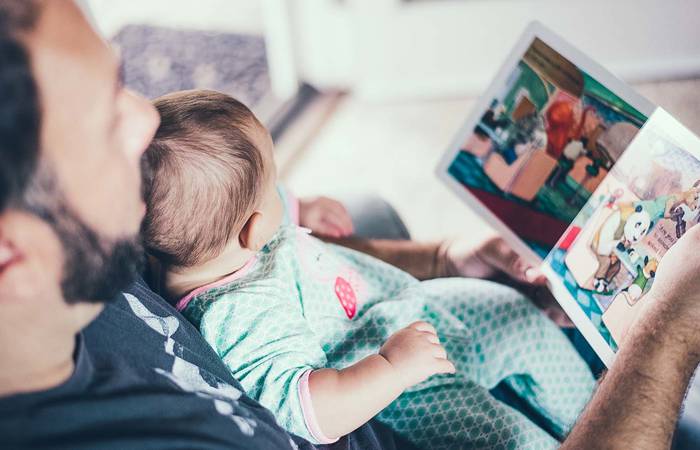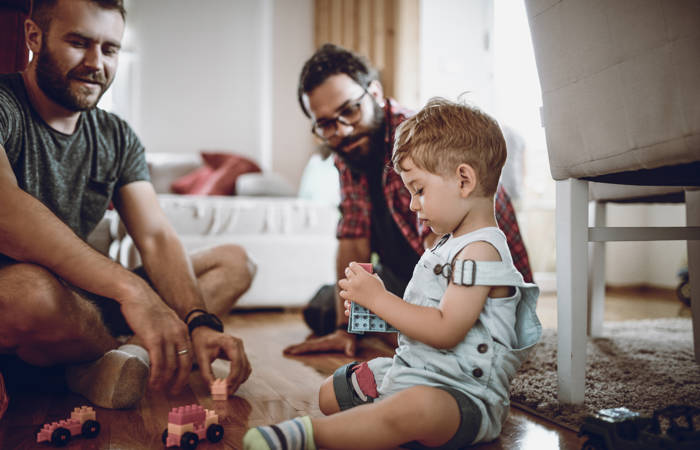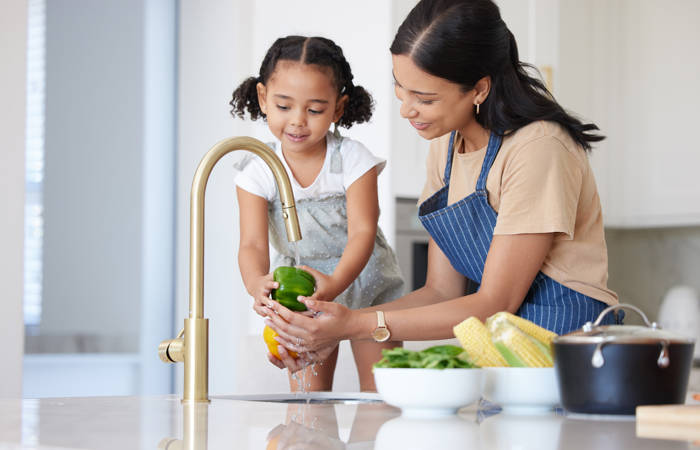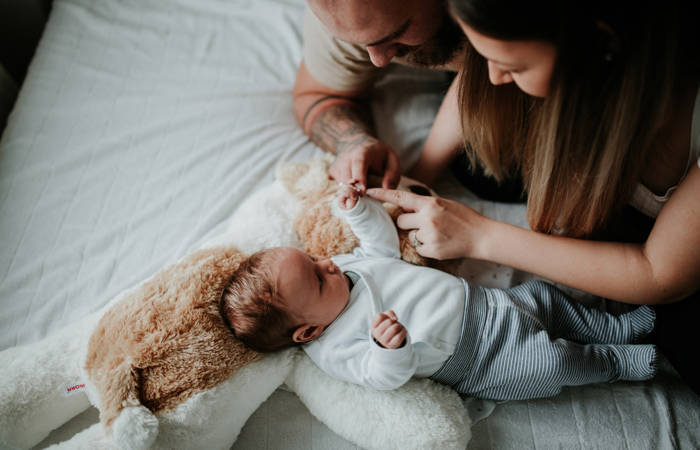Like what you see?
Sign up to receive more free parenting advice.
Thank you for subscribing to our newsletter!
Early Learning

Credit: iStock.com/kali9
An Australian researcher, examining how children learn to talk, says it can be helpful for toddlers to lead the conversation when playing with mum and dad.
Dr Laura Conway, from the Murdoch Children’s Research Institute (MCRI), is studying how children aged four years and under learn language, with a focus on the one in five children who are slow to talk.
“There is evidence that language develops through a mixture of nature and nurture. Children’s early brain development and genetic makeup play a part, and how parents interact with their children, particularly in the first few years, also has an influence,” Dr Conway said.
Focus on their cow and talk about what it is doing using rich vocabulary. By expanding on your child’s area of interest, you are helping them learn new words and also how to combine words into sentences.Dr Laura Conway
She says that talking about what your child is playing with and following their lead in conversation helps them to learn language.
“For example if you are both playing with toy farm animals and your child is playing with a cow and talking about the cow, you don’t want to then turn their attention to the sheep,” Dr Conway says.
“Focus on their cow and talk about what it is doing using rich vocabulary. By expanding on your child’s area of interest, you are helping them learn new words and also how to combine words into sentences.”
Language for Learning study
As part of MCRI’s Language for Learning study, Dr Conway examined 200 videos of mothers and their two-year-old toddlers playing together, studying how they take turns, give commands and share attention.
By analysing which behaviours are related to children’s language skills at ages two, three and four years, she found that talking about what your child is playing with and following their lead in conversation positively contributes to their language learning.
“The more time mums and toddlers were engaged in joint attention, the better the toddlers’ language skills were at the time and one year later. They were in joint attention when they were both focused on the same toy or activity at the same time and were aware of each other doing so,” Dr Conway says.
Joint attention
Dr Conway says that being able to participate in joint attention is a crucial skill for young children to learn language.
Joint attention behaviours emerge from around nine months of age when infants start to follow eye gaze, follow a pointed finger, to show and give objects to parents.
Dr Conway’s research examined different types of joint attention, or engagement states. It suggests that when toddlers are engaged with their parent by attending solely to the shared toy or activity of interest, rather than glancing to and from the toy and parent, their language learning in better.
“The distinction between these engagement types is important for clinicians and language researchers as it helps us understand the mechanics of language learning,” she says.
“The distinction is unlikely to be so useful for parents because we can’t necessarily change how a child is engaging.
“The important point is for parents to focus on and talk about the same thing as their toddler when they are playing together, regardless of whether the toddler looks at or replies to them. The toddler may still be in joint attention and so in a prime place for language learning.
“If what you are doing or saying seems to be influencing what your toddler is doing, then it is likely they are in joint attention and will be learning from you.”
The important point is for parents to focus on and talk about the same thing as their toddler when they are playing together, regardless of whether the toddler looks at or replies to them.Dr Laura Conway
Stay up to date with the latest news and articles from First Five Years
Thank you for subscribing to our newsletter!
Serve and Return
Dr Conway says she thinks about how parents and children interact and talk to each other in those early crucial years of language development as a game of tennis.
“I think about this as serve and return interactions, and like tennis players, they influence each other’s communications and fine-tune their game as the toddler’s skills improve.
“Children learn that successful social interactions occur through turn taking.
“Mummy takes a turn whilst I listen and wait, then I take my turn whilst mummy listens and waits, then mummy has another turn by responding to what I said or did, etc.”
Dr Conway says that in infancy and toddlerhood, caregivers need to take responsibility for keeping the ‘conversation’ going.
“Caregivers can model appropriate turn taking by waiting for the child to finish their turn before taking their turn.
“They can reflect on what their child just said or did e.g. ‘Your toy cow just ate those apples – munch, munch, munch!’. They can ask questions ‘Why did your cow eat all those apples?’.
“They can expand on what the child said e.g. Child says ‘Mo’ so mum says “Moo says the cow’. They can pause when they have finished their turn and wait for the child to respond using sounds, words or gestures.”
Developmental Language Disorder
Dr Conway says many children who are slow to talk catch up, but some might go on to have Developmental Language Disorder (DLD).
Typically children are not diagnosed with DLD until at least four years of age because children’s language development can be very fluid during the early years.
Dr Conway says over half of children with low language at two years of age will have language within the normal range by four years, and children who had language in the normal range at two years of age can go on to have DLD.
“There is no one time between 0-3 years when a single assessment confidently predicts later language disorder. Therefore, the recommendation is to check progress regularly, not to rely on a single indicator or milestone, and be alert,” Dr Conway says.
“If parents are concerned about their children’s language skills they can talk to their nurse, GP or local speech pathologist. They can also check out Speech Pathology Australia’s website and talkingpoint.org.uk for information about language development.”
Dr Conway says referrals to a speech pathologist may be recommended for a range of reasons to do with language skills. For example, children who have expressive language difficulties after three years of age, poor understanding (receptive language abilities), regression in communication skills (e.g. loss of words or using sentences), difficulties with social communication (e.g. interacting with others), or if the child is concerned about their difficulties or is experiencing negative social consequences.
“Children with DLD have problems expressing themselves and/or understanding what others are saying,” Dr Conway says.
“Not surprisingly, they can have difficulties in the classroom, learning to read, and making friends.”
Through her work, Dr Conway is trying to identify child and parent interactive behaviours that can be trialled in programs for children with language difficulties. This is not because parent-child interactions cause language difficulties, but because elements of the interactions can be harnessed to help children’s language skills flourish.
“Many therapies for children with language difficulties already target parent-child interactions. The findings from our study will help inform these interventions,” she says.
“Working with families on these behaviours has the potential to make a real difference to the lives of these children.”







